Born and raised in Santa Ana, California, Aracelis Girmay earned a BA at Connecticut College and an MFA from New York University. Her poetry collections include Teeth (2007), Kingdom Animalia (2011), and the black maria (2016), as well as collage-based picture book changing, changing (2005). Aracelis is the editor of How to Carry Water: Selected Poems of Lucille Clifton (2020), and with her sister, Ariana Fields, she collaborated on a newly published picture book titled What Do You Know? (2021). A Cave Canem Fellow and a member of the African Poetry Book Fund’s editorial board, for many years she facilitated youth and community writing workshops. She currently teaches at Pratt and lives in Brooklyn, New York.
Matthew Burgess met with Aracelis Girmay via Zoom on December 21, 2022.
Try this lesson plan inspired by Aracelis Girmay: “You Are Who We Love: A Lesson Plan for Collaborative Poems.”
Matthew: I first discovered your work when a friend emailed me your poem, “For Estefani Lora, Who Made Me a Card.” I read that poem with total joy, and it beautifully captures the experience of teaching poetry to kids. When did you first become a teaching artist?
Aracelis: Thank you, Matthew! I had been interested in working with young people when I was in college. I assisted an amazing fifth grade teacher in New London for a year, and I worked at a drop-in tutor session once a week when I was in college. But I first started working as a teaching artist when I moved to New York City in 2001. I was pursuing an MFA in poetry and at our orientation, Michele Kotler, who founded the Community-Word Project, came to talk with us about their Teaching Artist Training Program. So I started really thinking about writing and teaching, pedagogy and practice, with folks at Community-Word, some of whom are my dearest friends to this day. I started working with Teachers & Writers soon after. This work began in the wake of September 11th and so I felt an enormous sense of responsibility to be careful, playful, and present in my preparation and my time in the classrooms. I felt especially aware of how vital and critical these hours with each other were–that it was a time for us to feel how very possible we were! Our dreaming and experimenting and wondering together.
Matthew: What were some of the things that drew you to this work?
Aracelis: I think that the same thing that draws me to poetry is what draws me to working with young people—a sense of possibility and play. I am often surprised by how they are thinking or what they are wondering–the connections that they are making, the ways that they are making associations.
I have two little kids, four and six, and I am so deeply lucky to get to be with them and also to feel the challenges of what it calls up in me to be with them. What rules are for, and why I think rules exist. What happens when someone’s not doing what I think they should be? I feel like being with young people challenges me to examine what I really think about power and what I really think about play and rebellion. I have these ideas when I’m working with young people, or with people in general, that have to do with mutual respect and playfulness and exploration. And then to have these little kids who you’re with all the time, it challenges that. I can feel myself having to rethink what I think about power and what my position is when I have all of this power.
Matthew: Has your experience as a parent influenced your teaching practice in other ways?
Aracelis: I am sure. I am so interested in the inner lives of others, and since having kids I feel differently alive to how very distinct each of us are, from the beginning. And also how very many pressures we are often responding to–from the beginning. Time, inherited pressures.
As I plan for a class, or for whatever I’m teaching, I want to be so clear about what I hope I’m bringing. I really want to be clear about love being at the center of my practice when I’m working with young people. I feel very serious about that responsibility, that privilege. I want to be open enough and spacious enough to really hear their idiosyncratic ways of responding to a question or any number of things.
Matthew: The emphasis on ‘love being at the center of your teaching practice’ reminds me of bell hooks, who recently passed. Teaching to Transgress is one of my favorite books about teaching and she is such a shining example of an educator for whom love was central. She wasn’t afraid to talk about love and its central role to the work we do as teachers. Has bell hooks been an influence for you?
Aracelis: Completely. It’s been a while since I read Teaching to Transgress, I do think about her a lot. After hearing that she had passed, I was just thinking that I need to go back to that book and think with her deeply again in that way. I was in college—I think I was 18—when I found her work. I remember standing in the library and reading her. There are a few people like that, Lucille Clifton. I’m also often thinking about June Jordan and her question about love. She talks about how, in anything that she does, whether it’s standing at a picket line, teaching in a classroom, the question is, where is the love? Where is love here?
When I first read them both, I remember feeling like, “Oh, you can say that?”
Matthew: This reminds me of another poem of yours that I’ve been sharing with students recently: “You Are Who I Love.” As teachers, I think we’re always on the lookout for poems that speak to people and inspire them to write, too. Poems that might activate a certain alchemical response. For example, when I share “You Are Who I Love,” I witness people receiving the poem and then immediately pivoting to the page with that ‘quickening’ art creates. It’s such an immediate and visceral testimony to what poetry can do.
Aracelis: Thank you for sharing those poems. When you talk about the alchemic moment, so many things flash through. I feel flooded with moments. I’m thinking especially about the young people I’ve had the chance to read poems with or to give an experiment to. Especially the ones who are like, “I can’t possibly write the right thing.” The ones who think for whatever reason that what they have to say is not right. I am thinking about how with poems and art making there is no “wrong way,” and so these moments of trying together are also moments when we can practice responding with joy or confidence or “yes, I can,” for those of us who have been taught to think our ideas and imaginations are not right. What a gift to be able to say, “This page is open.”
As I plan for a class, or for whatever I’m teaching, I want to be so clear about what I hope I’m bringing. I really want to be clear about love being at the center of my practice when I’m working with young people. I feel very serious about that responsibility, that privilege.
I remember I had an art teacher in elementary school who used to say, “Whatever you do, you have this page, and you can make anything happen. Anything can happen on this page.” I just remember thinking, “Oh my goodness, I have a piece of paper. I have a page.” To years later be able to share that experience with young people is so wonderful. To say, “You have a page. You can say.” Especially the things that feel opaque, especially the things that feel hard to understand. I feel like we must protect that space for each other. To try to practice that for others and then give that back to yourself is tremendously powerful.
Matthew: I have so many things I want to ask you, but first, who was that teacher who said, “anything can happen on this page”?
Aracelis: I went to John Muir Elementary in Santa Ana, California, and we had this art teacher named Ms. Segal. She was essentially a teaching artist who came in and worked with a group of us while we she was there. That first day, I remember it so clearly. She handed us an ordinary piece of computer paper and she put it down on each of our desks like, this is your material. We were like, “Oh, I get a piece of paper too.” It was amazing. I mean, I remember she had this thick black hair and thick eyebrows. I mean, I remember her. At the end of her residency we made a calendar, and we showed our work and invited our families to our gallery show. It might have been a store somewhere, a shop of some kind. She was amazing. She helped me to feel in awe of the moment. I’m thinking about your book, Make Meatballs Sing: The Life & Art of Corita Kent and the everyday and the billboards and the poet. These are our materials, this is our life. If we pay attention, we are in the making of art, always.
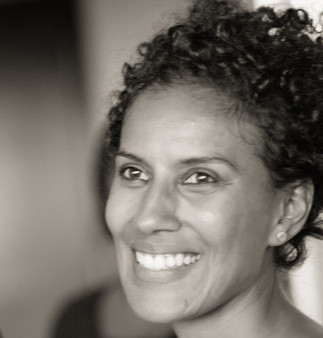
Matthew: What a beautiful intention to hold as a teacher—to help students “feel in awe of the moment.” Did anyone else in your life support this way of being in the world?
Aracelis: Being in Ms. Segal’s art class felt like an earthquake of possibility, but I also think my parents and my grandparents were also our models and teachers in this way. We were around a lot of people who made things out of scraps, who just made magic out of not a lot. Also, when we were little my mom would always say: “What? You can’t say you’re bored. You have this whole world. You have a window.” There were a lot of people around, a lot of models. But the paper—that was specific to Ms. Segal.
Matthew: If you tried to identify what was so inspiring about Ms. Segal’s teaching style, what would you say?
Aracelis: There was something so elemental about it. It was like, we’re going to start from the inside of the earth. We’re going to look at the paper. I’m thinking about that amazing Larry Levis poem, “Childhood Ideogram,” where he’s describing his childhood and sitting at the desk and the desk has all these people’s names written, carved into it. Now they’re old people and he’s looking out of the window and there’s a tree. Reading it, I can feel the lineages of the trees and the people and the place. I am in awe of that poem and the feeling of that poem is connected to the feeling I have when I remember Ms. Segal’s work with us. She helped me to know that my tools themselves–the paper, the pencil, the words and sounds of words–were elemental, full of histories and stories themselves.
But then she also said, “If you want the dogs to fly in your world, then the dogs can fly.” And then everybody had flying dogs on their pages because of the power of the teacher’s example. I think about that a lot too, especially with young people. How to share some of the possibilities while also giving them space enough so that they don’t feel like they have to copy your model.
Matthew: That’s so beautiful. Was your experience with Ms. Segal somehow connected to your awakening as a poet?
Aracelis: I thought about it a lot, especially when I first began thinking about my own pedagogy and art making practice for sure. It’s in there, but I think I hadn’t thought about it in a way that felt specific to poetry so much as art making and contributions to life.
Matthew: Contributions to life?
Aracelis: A way of paying attention, like mindfulness. That’s mindfulness practice, right?
Matthew: Absolutely. When I teach imaginative writing, my goal isn’t to push people into artistic tracks or “careers.” I’m more interested in how creativity can wake us up and enrich our actual lives. People visibly bloom and shine when they begin writing and making. You can see it. This is part of the work we do as teaching artists, I think—to invite people to discover or recover their imaginative powers. It is a quality of attention, yes, and a contribution to life. You and Ariana express this beautifully in your dedication at the beginning of What Do You Know?: “To those who, with their love and dreaming, make this world more livable for all.”
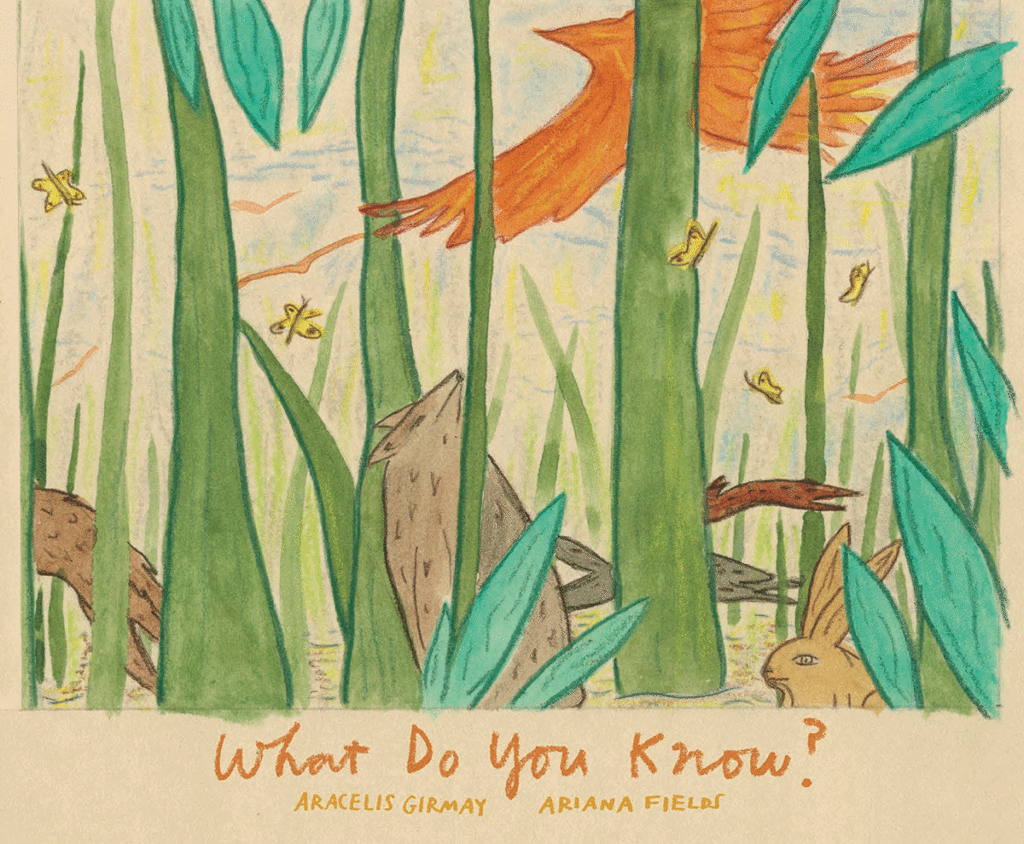
Aracelis: Do you feel like you knew that right away? Is that how you would’ve described what you were doing in those classrooms back in 1998 or 2001?
Matthew: I don’t remember if I had the same sense of mission at the beginning. One of the first times I taught poetry was for an event called “The Day of the Poet,” which Allen Ginsberg started when he was a professor at Brooklyn College. High school students from around Brooklyn came to the campus for a day of poetry. Everyone would gather for a reading in the morning and then go off into separate rooms and for writing workshops in smaller groups. I remember the magic of what happened in that circle, that room, and I remember walking to the subway at the end of the day and thinking, “I want to do this. I want to be a part of whatever happens in this circle of people reading and writing.”
One of the things I love about poetry in particular is related to Ms. Segal’s point about the freedom of the page. Poetry allows people to encounter themselves on the page in surprising and illuminating ways, even if it might sound strange to someone else. As you said a few minutes ago, “Especially the things that feel opaque, especially the things that feel hard to understand.” Poetry can be a place to experiment and explore ways of expressing or connecting with our inner lives.
Aracelis: Yes. I was working on a poem last spring with my kids and my daughter said this thing about “the blinking rain.” And I was like, “Oh, I know.” I know exactly, and also I don’t know. That feeling of simultaneously knowing and not knowing is so delightful. It gives me chills. Something like Emily Dickinson’s “If I feel physically as if the top of my head were taken off, I know that is poetry.” Now, when I walk through the rain, one of the things I carry is the blinking that I both do and do not understand. It is profoundly lucky and invigorating to get to be in such mystery with others.
. . . These moments of trying together are also moments when we can practice responding with joy or confidence or “yes, I can,” for those of us who have been taught to think our ideas and imaginations are not right. What a gift to be able to say, “This page is open.”
Matthew: I love the blinking rain and the way that it is both relatable and surprising. When we invite young people to write, we are giving them a freedom and permission that they don’t always receive in school. Part of our job as teaching artists, I think, is in creating opportunities for that openness where dogs can fly and the rain is blinking. We try to create the conditions where students can feel that free.
Aracelis: Right. Now thinking of bell hooks and her books for young people and June Jordan and Gwendolyn Brooks and Lucille Clifton. I mean, these writers, these thinkers who I held onto from the moment I found them and their work. I am thinking about their deep respect for children and how fiercely they could see what was and is at stake in these classrooms, what James Baldwin in No Name in the Street is talking about when he writes about Black children attempting to get an education “in a country in which education is a synonym for indoctrination, if you are white, and subjugation, if you are black.” And so I’m thinking about these spaces where somebody is actually encouraging some freedom practice to you as a young person and taking that seriously and also saying to you that play and experimentation are, in fact, essential parts of those freedom practices. That happens with a family member, a teacher, a friend–it’s not just poetry obviously, and it’s not necessarily poetry.
Matthew: I hear you. If we’re teaching as a practice of freedom and we’re working on behalf of our students as beings in the world, then we try to encourage them to express the fullness of their experience rather than merely imitating models or saying pretty things. We’re not asking them to make something tidy or that conforms to certain established standards at the expense of their own particularity and genuine inquiry. Part of poetry’s power is in allowing the space that feels wild, that feels unencumbered by the many pressures to create something that conforms to the conventions, the too-narrow rules.
Aracelis: And when you say wild, it also makes me think of failure, or trying to do something and not doing what you had hoped or trying this way and realizing actually I’m going to go this way. You can not know where you’re going and end up somewhere that you’re excited about, or say, in the end, never mind.
Matthew: Yes! It has to do with spontaneity, improvisation, and the willingness to take risks. It has to do with this emphasis on making over product. As teachers we work to create environments in which people can try something out without the overwhelming pressure for it to “arrive” or to immediately turn into something polished, finished. Because we know, as writers and makers, that the magic is in the process. The magic is in the doing. The most surprising and alive writing arrives when we surrender our need for it to turn into something, when we stop trying to control it. Maybe what we’re doing when we’re teaching is inviting people to explore that capacity–that energy and frequency.
Aracelis: That’s beautiful: “inviting people to explore that capacity…” There’s something about what you say and how you say it that makes me think of Kamau Brathwaite. Brathwaite was one of my teachers in graduate school and he talked about how everybody dismisses the snail, and they say, “Oh, the snail’s so slow. The snail is not a tiger.” I don’t know that he said the snail’s not a tiger, but something like that. The snail is not all of these things. The snail is so slow, but the snail is exactly where it is. And then it moves from there.
I remember thinking, “That! I want to be able to do that and I want to be able to offer that to students and to say we are where we are.” I remember bringing Neruda’s Book of Questions to these very little kids, right after September 11th, and each person got a question and they got to respond to the question and then ask their own wild questions. I remember something about the snail helped me to articulate to myself and to other people that this might be your answer these five minutes, and then you might say, “No, no, no. I contradict myself.” Or: “I am somewhere else now.” That feels rare and lucky to me, a space in which we are encouraged to change. I feel very lucky, too, that people have done that for me.
Matthew: The snail is such a beautiful metaphor. I think it is about feeling unrushed as you explore and allow the antennae to go up. The antennae don’t go up unless we feel a certain degree of trust in the environment. We both grew up in Southern California, not far from each other, and I remember being fascinated by the snails in the yard. I remember touching the antenna and watching them go down and then come back up again. This softness and this slowness. Even when I set a timer in class and we free-write together, the goal is not to write quickly but to encourage people to slip away from the censor or the critic and go into process, that mysterious zone when you are outside of time.
This reminds me of one of my favorite pages of your new picture book, What Do You Know? where you write: “When love comes to the historian and asks, ‘What do you know?’ She says, “I know history speaks when we listen for the quietest stories among stories.” It strikes me that, as teachers, we strive to listen to the quietest stories among stories. And we invite our students to recognize and tell their own quiet stories, and to feel that they’re valued in the space of the classroom.
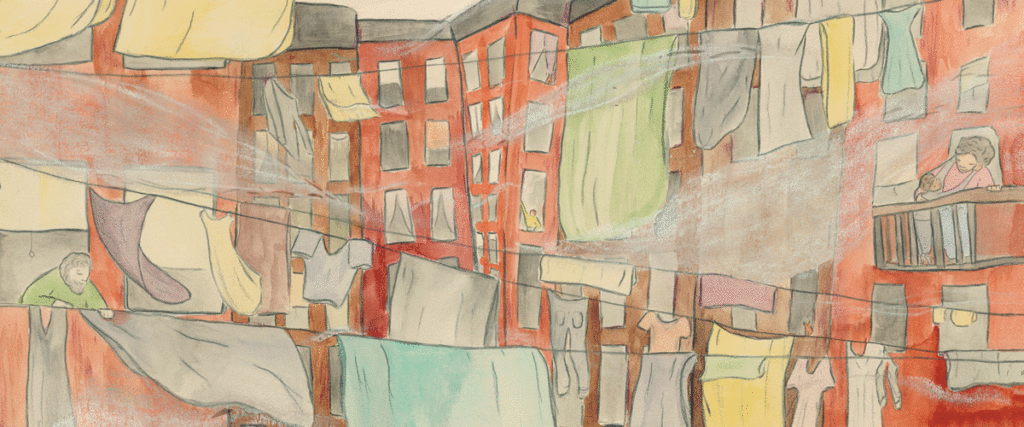
Aracelis: I’m thinking of the work or the discipline that I learned to find and that I’m struggling always to hold, of trying to sense or listen to what someone is saying. Especially those moments when the person themselves is throwing an idea away and I’m trying to figure out if it’s a moment to ask the question again or encourage them to just say it… or to let it go. This is one of the things I’m often reflecting on after a class, no matter what age group. The work of trying to sense and hold space open with others for everyone. But then also respect which areas they want to hold or keep outside of language. There are so many quiet stories inside of the quiet stories and to me part of this work in generative, literary arts spaces is trying to figure out when to encourage someone (or oneself) to open something up and when to let it be, and turn another way. I am always learning from, and struggling with, this very set of questions.
Matthew: I think you expressed it so beautifully and of course, you can never fully “arrive” as a teacher. We can never get it right now and forever. It’s always an attunement to the individuals in the room. We are trying to listen to our intuition and allow it to guide us in the moment. There will be mistakes. I think it’s in practicing this quality of attunement that we develop as teachers.
These are our materials, this is our life. If we pay attention, we are in the making of art, always.
Aracelis: There are moments where I feel like, “Oh, I think I know something, I think I know what they’re struggling with.” Maybe sometimes that ends up being true, but what I am always working on is trying to listen closely to what a student is telling me without guessing or thinking that I know where we are going, what they are thinking or saying.
I remember a former student at Hampshire saying to folks in our classroom: “I just want to remember that we don’t know what each of us might say. We can’t just assume that this is the person who says the things that are sensitive, and this is the person who speaks with authority.” She was just like, “As much as we can, please let’s try not to summarize or imagine we know the things each other thinks and says.” I just remember being so grateful and so moved by her clarity. That is, as you say, the attunement. What are the snails doing when they do that?
Matthew: I think they must be navigating and reading the environment. I don’t know. We’re going to have to look it up.
Aracelis: I’m going to look it up too. But there’s something about attunement in that.
Matthew: Yes, I think so. I’ve heard you say a couple times how important ‘not knowing’ is. It makes me think that when you commit to not knowing, you may be allowing something else to come through that might be hidden or not yet arisen-in-consciousness.
Aracelis: Can you say more?
Matthew: By embracing the not knowing we allow the space for an idea to emerge or to come into expression. Because we are approaching the process without expectation, and without the limit of trying to define it or to anticipate the outcome ahead of time. Then something else can come forward and through. I think I was drawn to poetry in the first place because of these early experiences of reading a poem and feeling read by the poem. It felt as if something that had been in the shadows was suddenly illuminated. It was a kind of magic. I’m thinking of Rilke’s Sonnets to Orpheus. Even though I didn’t know what the poems were “saying,” I experienced these flickers of light, like Ezmi’s blinking rain. And I was like, “What is this?” But I wasn’t really trying to answer that question; I just wanted to experience that flickering more and more.
Aracelis: How old would you say you were?
Matthew: I was a grieving teenager–I had just lost two people I loved. And I discovered there were ways of saying things that seemed strange and beautiful and slant, and unlike most uses of language that I had encountered to that point. I didn’t know language could do that.
Aracelis: Do you remember if you then said I want to be a poet too? What was your response to that, those flickers of light?
Matthew: I think it was that I had been enthralled or magnetized, and so I wanted to explore that more, I wanted to walk into that forest. It’s funny—one of the things I wanted to talk to you about is how the spell cast by a poem can activate or invite a response in the reader. How a hand can sort of reach out of one poem and invite the reader to respond in kind. I think your picture book does this, even in the title: What Do You Know? You’re speaking directly to the reader throughout the book, and I feel this tone of invitation and grace and beauty. Again, it reminds me of “You Are Who I Love.”
Aracelis: Thank you. That’s interesting because they both have such structure and really employ anaphora and other kinds of repetition, and so there’s a way that form and repetition in and of themselves are invitations to continue, to stretch an idea further.
Matthew: What Do You Know? begins with an epigraph to a poem by Sharon Olds, “Looking At Them Asleep.” Was the manuscript written in response to that poem?
Aracelis: My former colleague, Rachel Beckwith, read that poem to me when I was pregnant with my son, Alem, who is now six. She read that poem at this beautiful baby shower that my colleagues threw for me and she was so moved by it and I was so moved by it. It is a beautiful poem and I love Sharon Olds’ work so much. But this poem, to me, will always feel written by Sharon Olds and also by Rachel Beckwith, because I met the poem and it’s feeling through Rachel. And so I had immediately held this poem very close. After Alem was born, my sister Ariana and I were like, Let’s play. Let’s make something. We make a lot of things together. That poem was so close to me, as was new motherhood, and so that was the thing that we played from.
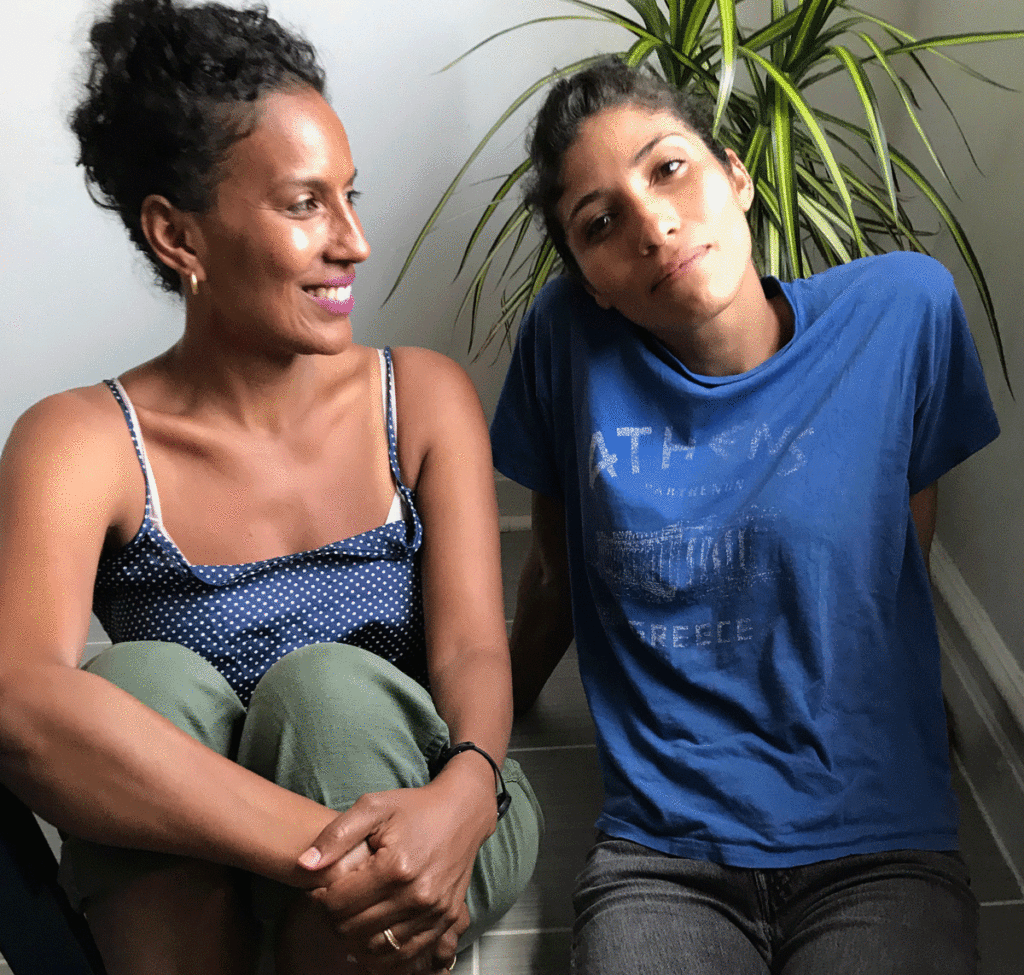
And I feel similarly about your new book, Make Meatballs Sing: The Life & Art of Corita Kent. It’s so gorgeous and so joyful! And after reading it I remember looking into my pantry at not just the food but the materials that things are stored in: cans, bags, cereal boxes. And I was like, “There are so many things I want to make!” Collages, sculptures, surprises, found poems–art made out of everyday materials and language.
Matthew: That is the hope! One of the best outcomes, for me, would be for these books to quicken a desire to create, to make. Like Ms. Segal and the open page and the sense that our materials are everywhere. They’re all in front of you. Fostering that creative quickening would be the best thing.
Aracelis: I love that you call it the quickening. Also, I’m thinking about the way that there was a community around the making. You’ve all of these life connections from the time you’re a child and you’re looking up at the artwork in your friend’s parents’ homes. There were all of these moments of intersection and future collaborations that you were walking toward and that you did not know would be a part of your future work. You didn’t know that E. E. Cummings would lead your cousin’s partner to tell you about Corita Kent’s connection to E. E. Cummings, right? I mean, this, to me, is one of the gifts of being available to being accessed by the pieces that other people are walking with, or the parts of the story that other people are walking with. Does that feel true?
Matthew: It feels true, and it makes me think about the loving and reverent way you talk about your heroes too. That you remember where you were when you discovered Lucille Clifton. That was a moment. That was an illumination—the recognition that this extraordinary person existed. I think one of the great rewards of loving art is in following these trails. One leads to another and another and it begins to feel like an endless web of connections across space and time. They begin to speak to each other, and you feel led you into this network of illuminated makers and kindred spirits who are teaching you how to be alive and awake in the world.
Aracelis: Yes. In the Chronology in the back of Make Meatballs Sing where it says: “Corita dies in Watertown, Massachusetts at age 67. In a letter to friends and family, she writes, ‘I feel this new life is just the next step and that I will still be knowing and caring for all of you forever.’” I mean, that’s just so powerful and moving to me. That insistence on connection always, I feel like that’s part of this. That’s part of what we’re saying too, when you talk about the hand reaching from the poem and leading to this poem and the ongoingness of that.
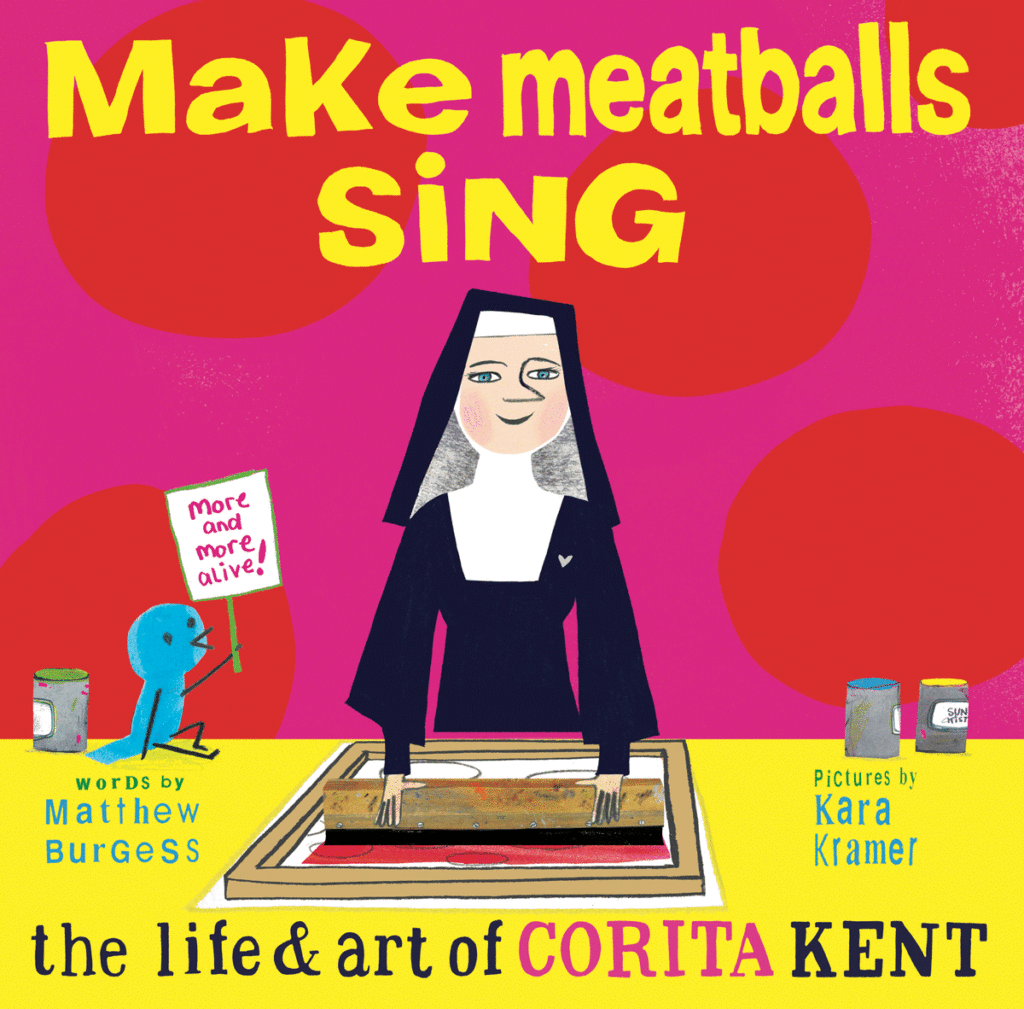
Written by Matthew Burgess and illustrated by Kara Kramer.
Matthew: Yes. And I read that Lucille spoke to you in a dream.
Aracelis: Oh my gosh. You read the forward [of How To Carry Water]. I don’t know what to say except that there was something about working on that Selected and spending so much time with Lucille Clifton’s work and her interviews while my children were very little. Maybe Ezmi was one and two when I started working on the Selected of Lucille Clifton’s work. I knew that hands are very important in Lucille Clifton’s work and life, and little Ezmi was so expressive with her hands, especially when she was very small. I was thinking of touch and other forms of communication outside of language. All of that helped me to know that I could put the dream in the forward. So again, there are so many people around that page or in that page. So many people make up our languages and courage and help us to know how to listen and write and be written.
Matthew: I love that. I have a similar experience when working on a biography of an artist. I imagine it’s similar to your work editing Lucille Clifton’s Selected Poems. There is this point in the immersion where it feels like you’re communicating, whether it’s real or imaginary. It’s a profound and exciting experience to feel that that channel is open in some way.
Aracelis: It’s a love thing, I think.
Matthew: Yes, it’s a love thing.
Aracelis: How about your work with Corita Kent. Has your deep study of her practice and life shaped your teaching in some way?
Matthew: The most immediate and obvious one is “plork,” Corita’s portmanteau combining play and work. This is so central to my teaching philosophy. Combining light-heartedness with absorption in the process, improvisation and rigor, not-knowing with a willingness to venture into the dark.
Aracelis: It’s such a great word.
Matthew: Maybe that concept of “plork” will help some young person to find a path through resistance into imaginative play. As teachers we’re in the business of offering students tools to overcome fear or resistance or self-censorship. Different students need different tools, and it’s our job to collect and share them as freely as we can.
Matthew Burgess is an Associate Professor at Brooklyn College. He is the author of eight children's books, most recently The Red Tin Box (Chronicle) and Sylvester’s Letter (ELB). Matthew has edited an anthology of visual art and writing titled Dream Closet: Meditations on Childhood Space (Secretary Press), as well as a collection of essays titled Spellbound: The Art of Teaching Poetry (T&W). More books are forthcoming, including: As Edward Imagined: A Story of Edward Gorey (Knopf, 2024), Words With Wings & Magic Things (Tundra, 2025), and Fireworks (Harper Collins, 2024). A poet-in-residence in New York City public schools since 2001, Matthew serves as a contributing editor of Teachers & Writers Magazine.

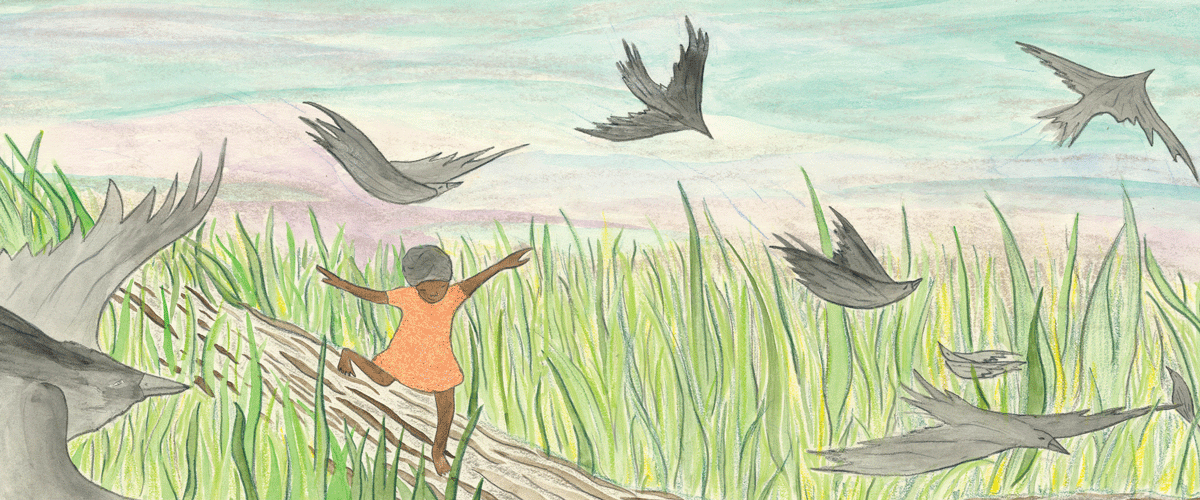


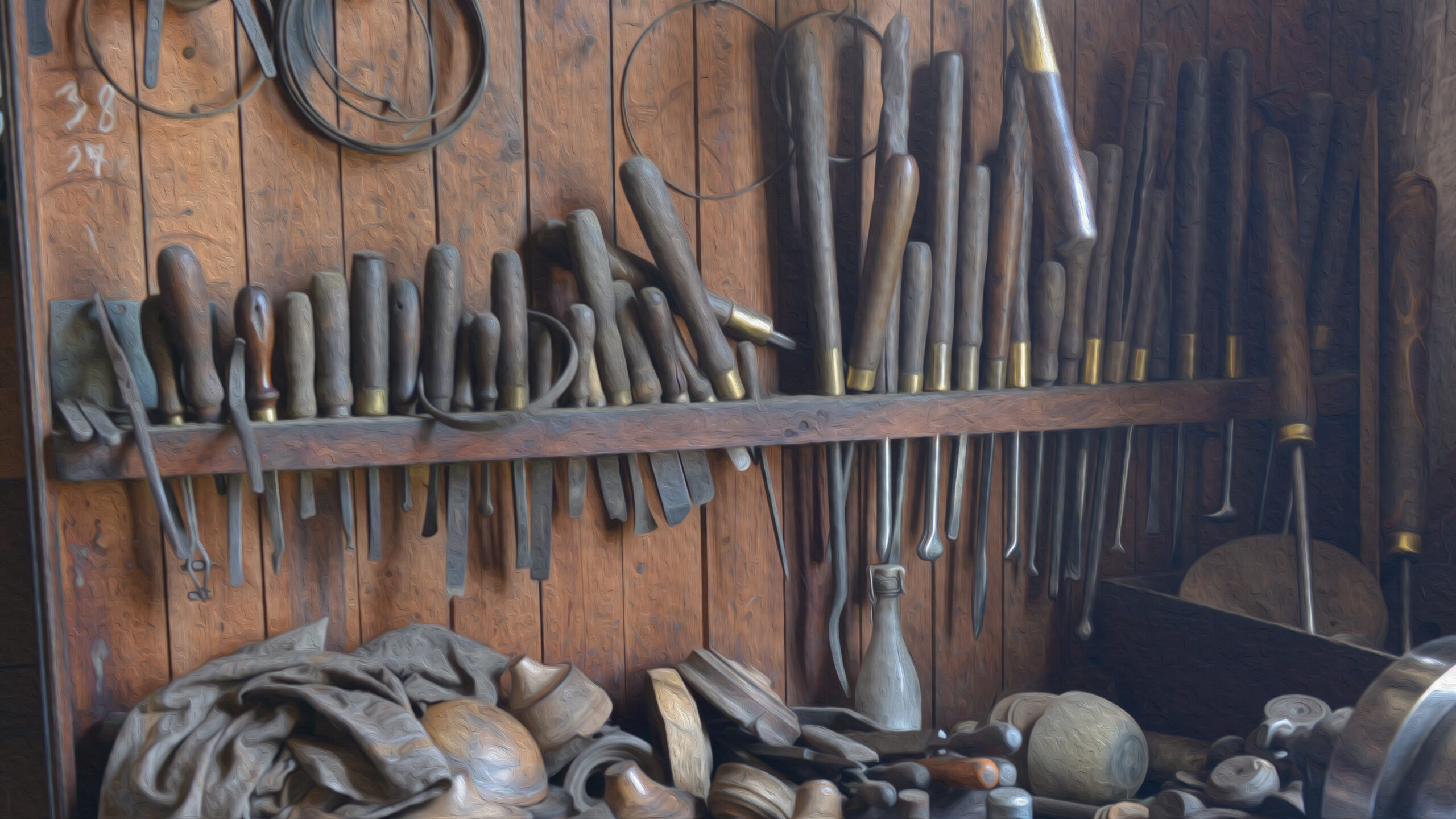
One response to “The Beauty of the Snail and the Blinking Rain”
This article was a wonderfully read. Two creative people sharing ideas and their history in the arts is jut what I needed this evening. The open page where anything can happen, this is what I always hoped to offer to my students in my years of teaching. I look forward to reading the books mentioned that I have not yet read.